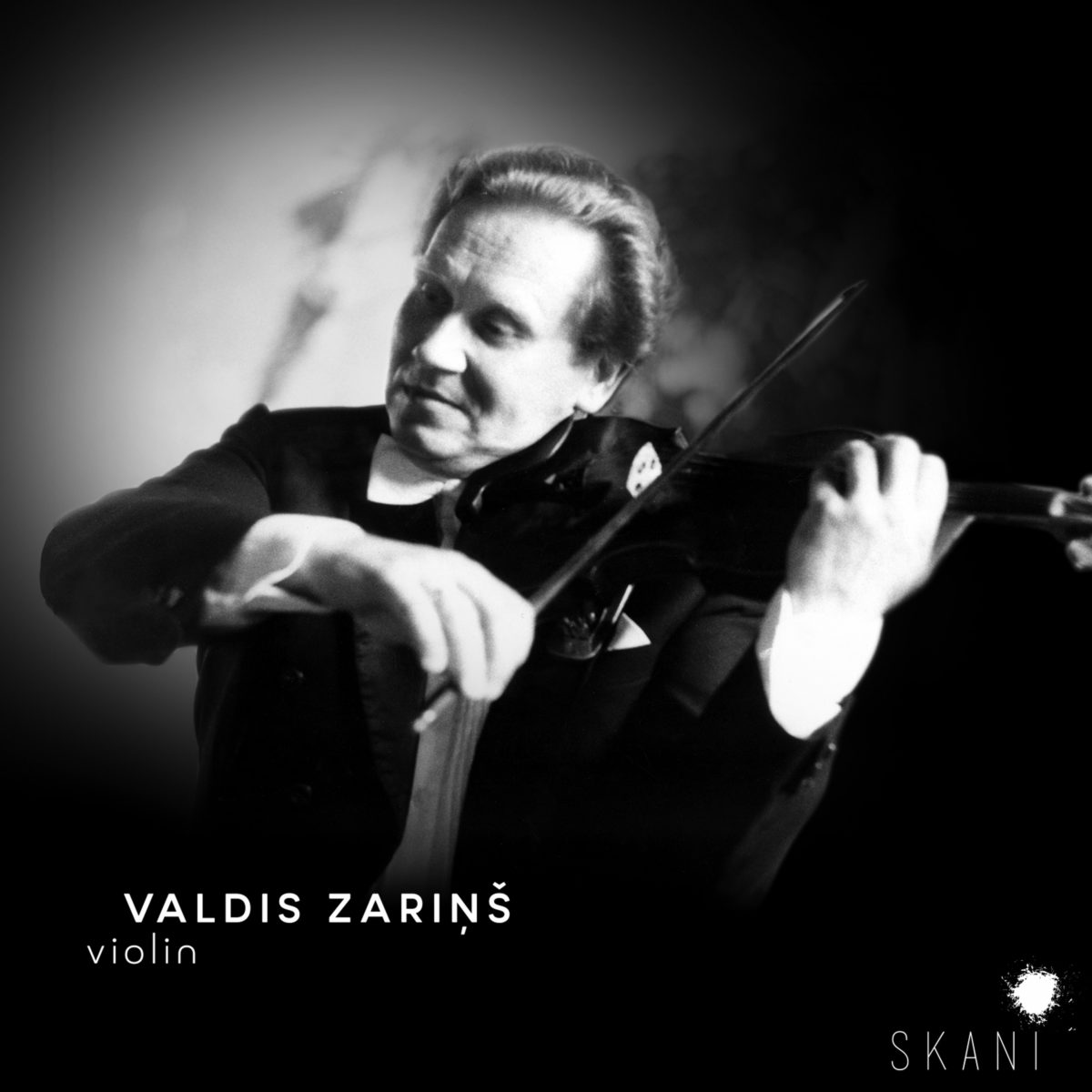Distinguished Latvian violinist Valdis Zariņš, who passed away in 2018, left behind a towering body of work. Over many decades of performance, Zariņš established himself as a peerless violinist, both as a soloist as well as his orchestral performances, most notably with the Latvian National Symphony Orchestra, where he performed for more than two decades.
While performing with the LNSO, Zariņš was often under the baton of renowned conductor Vassily Sinaisky, and the tandem gave hundreds of memorable concerts and made many significant recordings.
To honor Zariņš’ musical legacy, the Latvian national record label Skani released a two CD set of recordings featuring Zariņš with the LNSO conducted by Sinaisky in 2019. Simply entitled Valdis Zariņš, the collection contains four violin concertos, two by Latvian composers – Gundaris Pone (who is also the conductor for his concerto) and Romualds Kalsons, and two by international composers – Jean Sibelius and Béla Bartók.
Finnish composer Jean Sibelius’ violin concerto, composed in 1904/05 and recorded by Zariņš and Sinaisky in 1988, is a personal and emotional work. Beginning in the opening of the first movement, Zariņš performs in an expressive, intimate manner, particularly in the extensive solo section in the middle of the movement, where Zariņš expresses varied moods in a captivating way. The slower, almost sentimental second movement is elevated by Zariņš’ mellifluous performance, while the dramatic, almost galloping third movement gives Zariņš the opportunity to display his technical skill, all the while supported by the precise performance by the LNSO.
Hungarian composer Béla Bartók’s Violin Concerto No. 2, composed in 1937/38, though full of Bartók’s Hungarian folk music influences, perhaps also reflects the current state of Europe at the time, with war all but inevitable. This may be represented with dramatic moments like the unexpected blast of sound in the first movement, almost like an alarm, and Valdis Zariņš and the LNSO fill these moments with a kind of terror and foreboding. The tranquil second movement offers a respite from the often tense first movement, though there are moments where the uneasiness returns. The third movement is more playful, and the interplay between the soloist and the orchestra is vividly displayed by Zariņš and the LNSO.
The Violin Concerto by exiled Latvian composer Gundaris Pone, composed in 1959, was performed by Zariņš (with the composer himself wielding the baton) and recorded in 1990. The work opens dramatically, with loud bursts of sound suddenly appearing, then dissipating as an eerie quiet takes over, punctuated by what seems like a searching melody performed by Zariņš. Pone, considered as the only truly avantgarde Latvian composer (avantgarde was frowned upon in Soviet occupied Latvia, so only an exiled Latvian could freely compose in this style), displays this in the third movement, which opens with what sounds like a crack of a whip, indicating the driving tempo of the music that follows. The orchestra is a blur of motion, all the way to the conclusion, with Zariņš’ providing a virtuoso performance.
There is an interesting note in the CD booklet about Romualds Kalsons’ Violin Concerto – that, in this performance, Zariņš is truly a soloist – there are no other violins in the orchestra. Zariņš’ performance then takes on an additional dimension in this work that fuses many different styles and moods, like in the second movement, which is at times tense, at other times exhibits a kind of dark humor. Moments of contemplation imbue the third movement, while the percussive fourth movement includes an almost hypnotic performance by Zariņš, and the work concludes suddenly, as if it were unexpectedly interrupted.
The CD booklet is full of fascinating anecdotes about the performer, as well as the compositions. For example, Zariņš would regularly carry ten E strings with him, as he would regularly break this string during performances, and Zariņš played a violin made by Latvian luthier Mārtiņš Zemītis (which is also the violin used on the Bartók concerto recording).
Though all four violin concertos are 20th century compositions, there is still significant variety in these performances, and violinist Valdis Zariņš displays his skills throughout these works, adapting and changing to effectively present each work. Along with the Latvian National Symphony Orchestra, conducted by Vassily Sinaisky, these four performances reveal the adaptability and talent of the violinist. Of course, it is not possible to summarize all the achievements of Zariņš over just two CDs (and one is keen to hear solo performances of his as well), but the Skani release of Valdis Zariņš proves an effective reminder of what a singular violinist Zariņš was and his immense contribution to Latvian academic music.
For further information, please visit the Skani website

Valdis Zariņš
LMIC/SKANI 074, 2019
Track listing:
CD 1
JEAN SIBELIUS Violin Concerto in D minor, op. 47
1. Allegro moderato
2. Adagio di molto
3. Allegro, ma non tanto
BÉLA BARTÓK Violin Concerto No. 2, Sz 112
4. Allegro non troppo
5. Andante tranquillo
6. Allegro molto
CD 2
GUNDARIS PONE Violin Concerto
1. Allegro non troppo sempre di gran maniera
2. Adagio elegiaco un poco rubato
3. Allegro molto vivace
ROMUALDS KALSONS Violin Concerto
4. Allegro ma non troppo
5. Adagio elegiaco un poco rubato
6. Andante con moto
7. Allegro non troppo



